I visited Kyoto’s number one site, the Fushimi Inari Shrine, one afternoon on a hot August day. I was particularly excited to visit this shrine because of its memorable appearance on one of my favorite movies, Memoires of a Geisha. During this scene, young Chiyo runs along the vermilion (orange-red color) torii tunnels, leaving moviegoers extremely taken by the site. The shrine is a UNESCO World Heritage site, one of the many Japan has to offer.
Fushimi Inari is a Huge Deal
The Fushimi Inari Shrine is a huge shrine complex built on the side of Mount Inari dedicated to the kami Inari. A kami in Shintoism is a spiritual being that Shinto devotees worship. Kami are elements in nature, animals and even the spirits of the deceased. Fushimi Inari is the head of all the shrines around Japan that are dedicated to Inari, the kami of foxes, fertility, rice, tea, sake, agriculture and industry. Inari also represents prosperity and success.
The shrine was originally built in 711 in a different location but it was moved to its current spot in Fushimi, Kyoto in 816 at the request of a monk; the main building was built in 1499. Visitors can climb the mountain, following paths under over 10,000 vermilion torii gates. Climbing all the way to the top of the mountain and down through these paths is challenging and can take up to 4 hours.
(To read more about Fushimi Inari visit Sacred Destination’s web page, click here)
A Warm Vermilion Welcome
After spending my morning in the Arashiyama Bamboo Forest (to read about that, click here), a took the JR Nara line to visit Kyoto’s most spectacular site. I used my Japan Rail pass to easily hop on the train in Kyoto Station to head to Fushimi Inari Shrine. I got to the JR Inari Station just as the day’s weather started to cool down into the late afternoon. The shrine is conveniently located a short walk from the station and when I reached the entrance I was greeted by a large torii gate.

Located beyond the torii gate is Fushimi Inari’s tower gate, the rōmon, which marks the entrance to this sacred ground. Visitors stop here at the temizuya to purify themselves with water. The rōmon is flanked by two fox stone statues representing the kami Inari.
The welcoming grounds where the rōmon in located also hosts other important shrine structures such as the main shrine and the worship hall.

After exploring the shrine complex’s buildings, I hastily made my way to the famous vermilion torii tunnels I had seen on film.
Get Ready for A Lot of Walking
After climbing stairs and passing under impressive torii gate I reached the spot that makes visitors cry in excitement: the two torii gate tunnels that are side by side. There was a sign in Japanese with an arrow that pointed to the entrance to the tunnel on the left, which I assumed meant that that was the tunnel I had to go through to reach the other side.
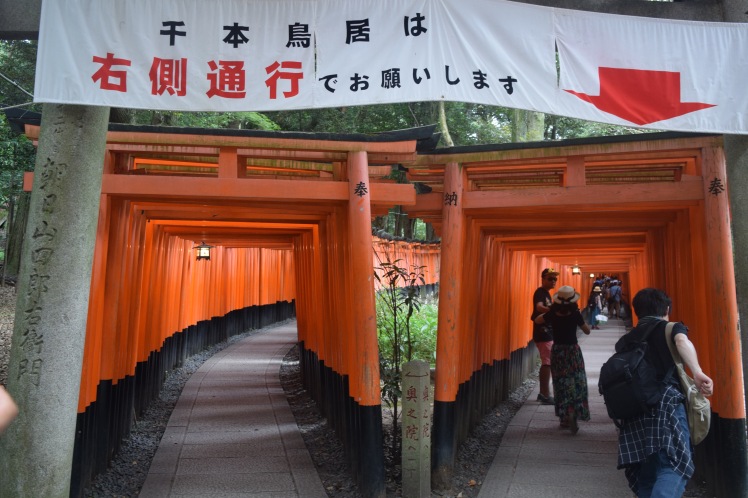
The special thing about these two tunnels compared to the rest of the torii gate tunnels found on Mount Inari is that the torii gates here are shorter and closer together. This makes for spectacular photo opportunities if you manage to find yourself alone under them. As you walk towards the exit, the dramatic color vermilion stretches on as far as the eye can see. I took a moment to turn around a saw that the torii gates had black Japanese characters written on the back of them, naming the business that donated the torii and when the donation occurred. This enhanced the view significantly.
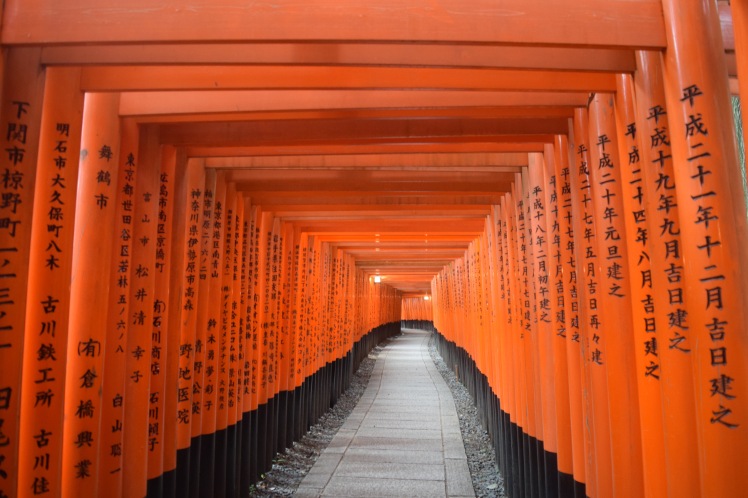
The rest of the hike up the mountain featured more torii tunnels, with taller torii with more separation between them, and the occasional small shrine adorned with mini-torii and fox statues.
Visiting the Fushimi Inari Shrine was an extremely iconic part of my trip to Japan. As a climbed up stairs after stairs and passed through more and more torii gate tunnels, the people I had entered the shrine with began disappearing until I was all alone in the quiet.
I never made it to the top of the mountain, a climb I surely would not have been able to make wearing flip flops (I recommend to dress for hiking for this visit.) But the serene shrine complex left its mark on me as I made my way down and back to the train station.
Below I have put together a series of photographs that illustrate the journey you could take if you visit the Fushimi Inari Shrine during the summer. I look forward to one day visiting this shrine during the three remaining seasons, each potentially offering a different but still magical experience.

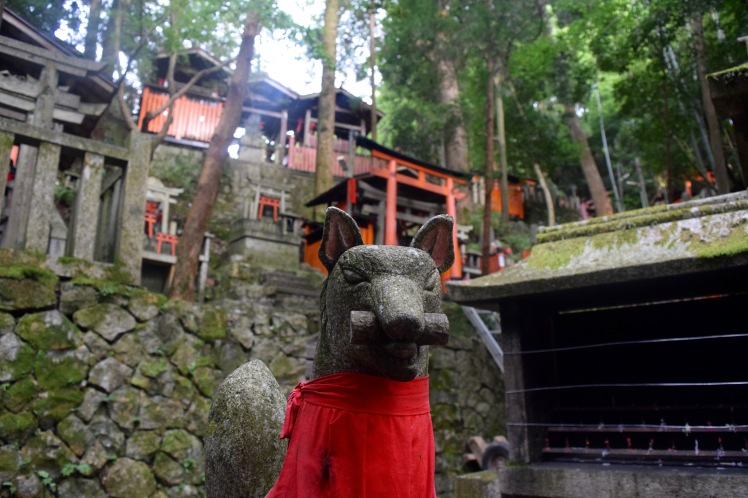
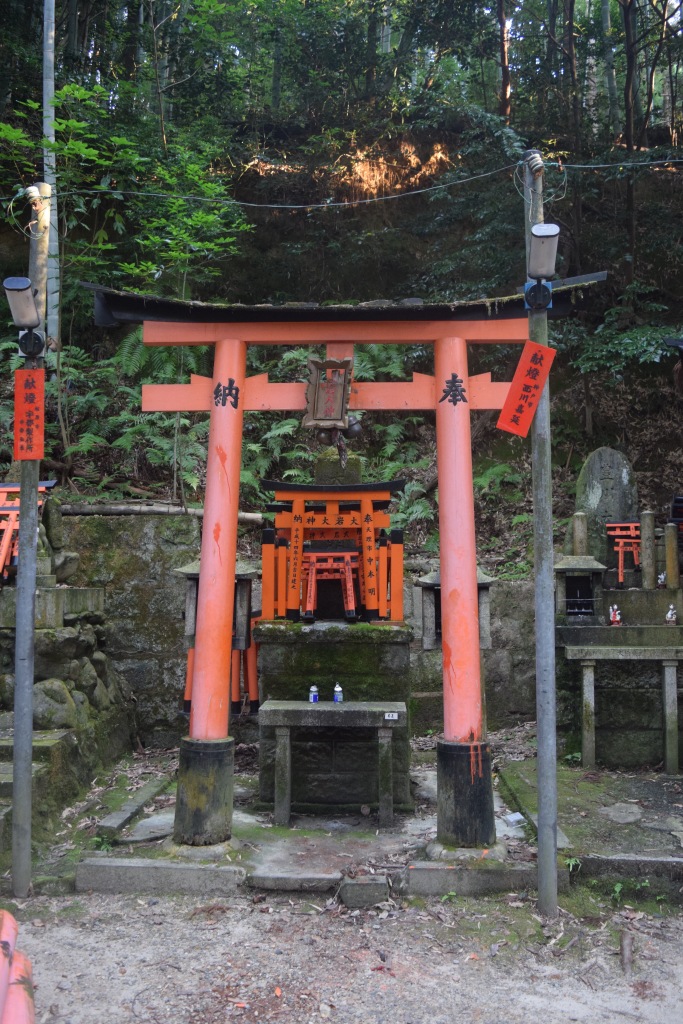
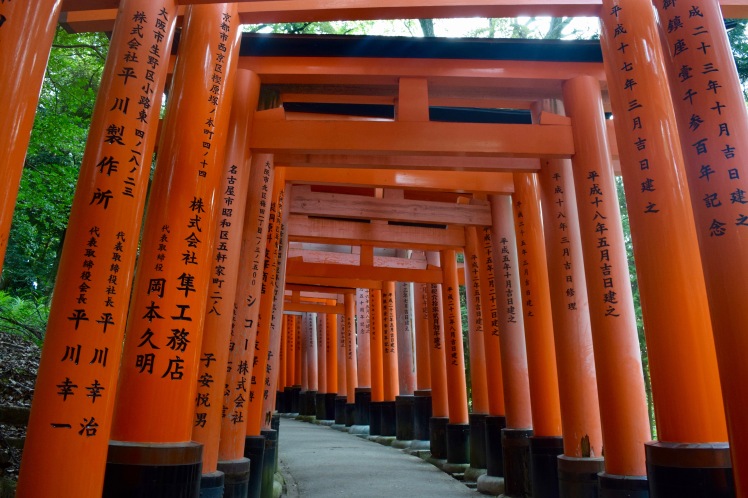
Really cool shots! This place is definitely on my bucket list 🙂
LikeLiked by 1 person
Nice pictures! This is one of my favorite places in Kyoto so I’m glad you were able to check it out.
LikeLiked by 1 person